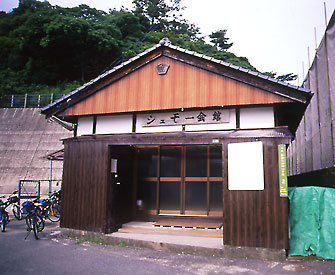Expanding the Circle of Assistance
Hiroshima House of Rest
American author Ira Morris and Swedish author Edita Morris visited Hiroshima in 1955 and decided to create a facility where the survivors could get some peace of mind.
The Hiroshima House of Rest, opened in May 1957, was a facility where survivors visiting the city to obtain physical examinations or receive treatment could spend the night; it was also used by local hibakusha as a recreation facility.
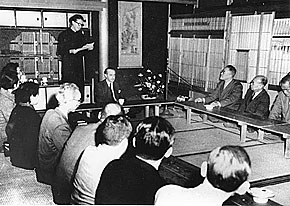 70 Mr. and Mrs. Morris attending the opening ceremony May 2, 1957 Ujina-machi Courtesy of Chugoku Shimbun At first, the support relied completely on donations offered personally by the Morrises, but later a Hiroshima House Foundation, Inc. was established in New York, widening the circle of support for the A-bomb survivors. |
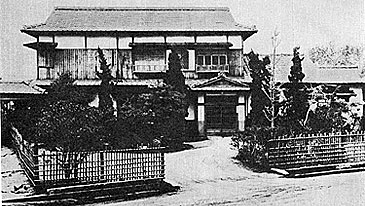 71 Hiroshima House of Rest opens Ujina-machi Source: Hiroshima Ikoino Ie No. 1 A wooden two-story rest house was built in a nice scenic location along the Kyobashigawa River with the interior including lodgings and a large hall for recreational purposes. |
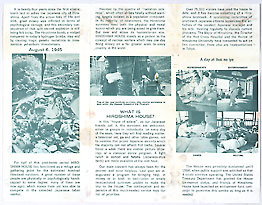 72 Leaflet for the Hiroshima House of Rest Collection of Cultural Affairs Division, Culture and Sports Department, Citizens' Affairs Bureau, the City of Hiroshima This leaflet was created to raise funds for the Hiroshima House of Rest. Distributed overseas, it explains the purpose of the project and asks for donations. |
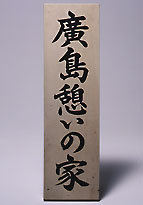 73 Nameplate of the Hiroshima House of Rest Collection of Cultural Affairs Division, Culture and Sports Department, Citizens' Affairs Bureau, the City of Hiroshima This nameplate was displayed at the entrance to Hiroshima House of Rest. |
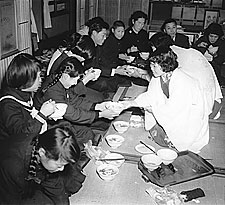 74 "New Years Party-Eat your age in zoni (rice cakes in vegetable soup)" January 3, 1959 Ujina-machi Courtesy of Chugoku Shimbun The rest house hosted various recreational events, including gatherings to watch movies and listen to records as well as outdoor activities such as hunting matsutake mushroom. |

